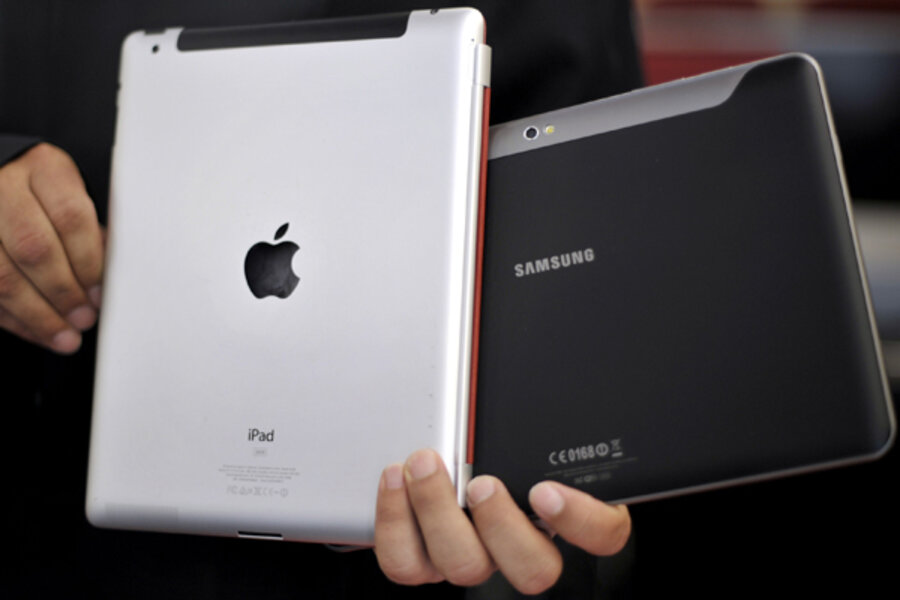Young children using mobile media more, but other types of screens less
Loading...
Mobile media use has skyrocketed among young children over the past two years, according to a new report from the advocacy group Common Sense Media, while “screen time” overall – the use of televisions, computers, smart phones, and so on – has dropped.
The survey results, released earlier Monday and coming amid growing debate over young children’s use of touch-screen technology, reveals a dramatic shift in family life, says Jim Steyer, CEO of Common Sense Media.
“This is big news,” he says. “This is pretty amazing in terms of what it shows about the digitization of young childhood. It’s a transformational shift in childhood, in media, and in technology use now.”
Forty percent of all families with children age 8 and under now own a tablet device, such as an iPad – up from 8 percent in 2011. Three-quarters of all young children have access to some sort of “smart” device at home, compared with 52 percent two years ago, and 38 percent of children under the age of 2 have used a mobile device for media.
Overall, the amount of time young children use these devices has tripled since 2011, to an average of 15 minutes a day. (That number is far larger among children who use a mobile device daily. They play for an hour and seven minutes.) And as many young children have their own tablets today – 7 percent – as did parents two years ago.
“These kids are the true ‘digital natives,’ ” Mr. Steyer says, referring to a term coined in 2001 to describe people growing up in the age of digital technology.
At the same time, children are spending less time with other types of screens, such as televisions, DVDs, and video games. Television “still reigns supreme in children’s medial lives,” according to the report, with nearly 6 in 10 young children watching it every day, but the amount of time children spend in front of it has, for the first time, dropped.
Overall, the average total screen time among 0-to-8-year-olds is just under two hours a day (one hour and 55 minutes), compared with two hours and 16 minutes in 2011.
“This is hopeful,” says Susan Linn, co-founder of the advocacy group Campaign for a Commercial Free Childhood. “The public-health community has been working hard for a long time to reduce children’s screen time. The report suggests that parents are getting that message.”
The American Academy of Pediatrics recommends that children under 2 avoid screens altogether and that older children limit screen time to less than one to two hours a day.
Still, Ms. Linn says, there are causes for concern in the new numbers. Children under 2 years old watch an average of 44 minutes a day of television, slightly more than in 2011. And while parents report that 66 percent of children under 2 have watched television at some point – the same as in 2011 – the percentage that has used a smart phone, tablet, or other mobile device has jumped from 10 percent to 38 percent.
“It’s worrisome that, contrary to the general trend, baby screen time does not seem to be decreasing,” Linn says. “They are spending more time with television, and their mobile app use has really taken off.... The more time that babies spend with screens, the less time they spend with activities we know are developmentally important and beneficial for them.”
Despite the explosion of apps marketed to preschoolers and their parents as “educational,” the survey found that educational media still reach most children through television. Sixty-one percent of children sometimes or often watch educational shows, parents report, compared with 38 percent who often or sometimes engage in educational activities on a mobile device. This is particularly true for lower-income children, who are far less likely to access educational content on mobile devices than their wealthier peers (28 percent versus 54 percent), but are slightly more likely to watch educational television programming.
That disparity exists despite a closing technology gap between low-income and wealthier families. Over the past two years, smart-phone ownership has jumped to 51 percent from 27 percent among families making less than $30,000 a year. Tablet ownership has also increased to 20 percent from 2 percent during the same time period.






